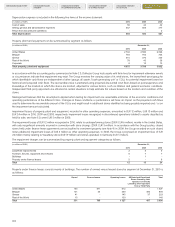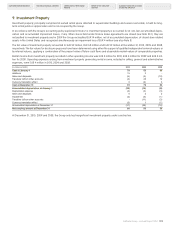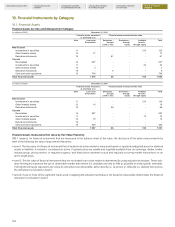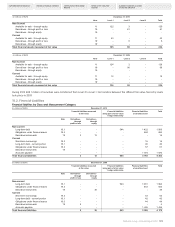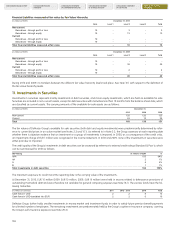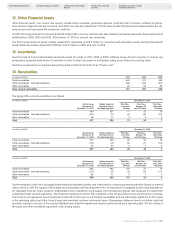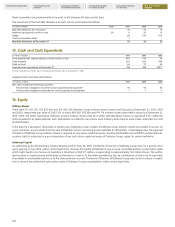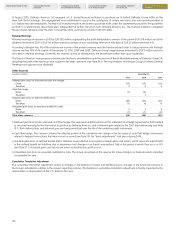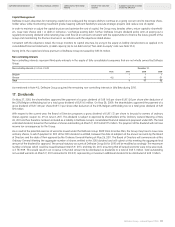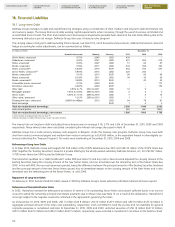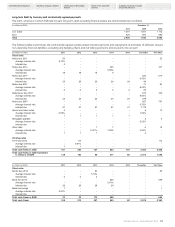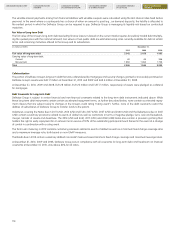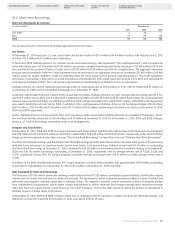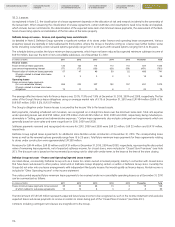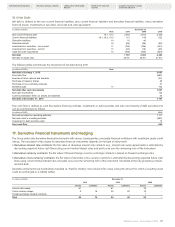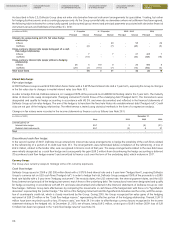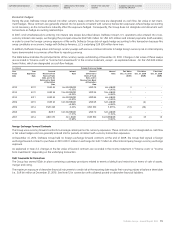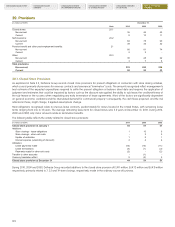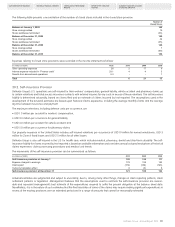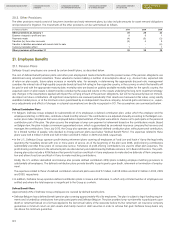Food Lion 2010 Annual Report Download - page 116
Download and view the complete annual report
Please find page 116 of the 2010 Food Lion annual report below. You can navigate through the pages in the report by either clicking on the pages listed below, or by using the keyword search tool below to find specific information within the annual report.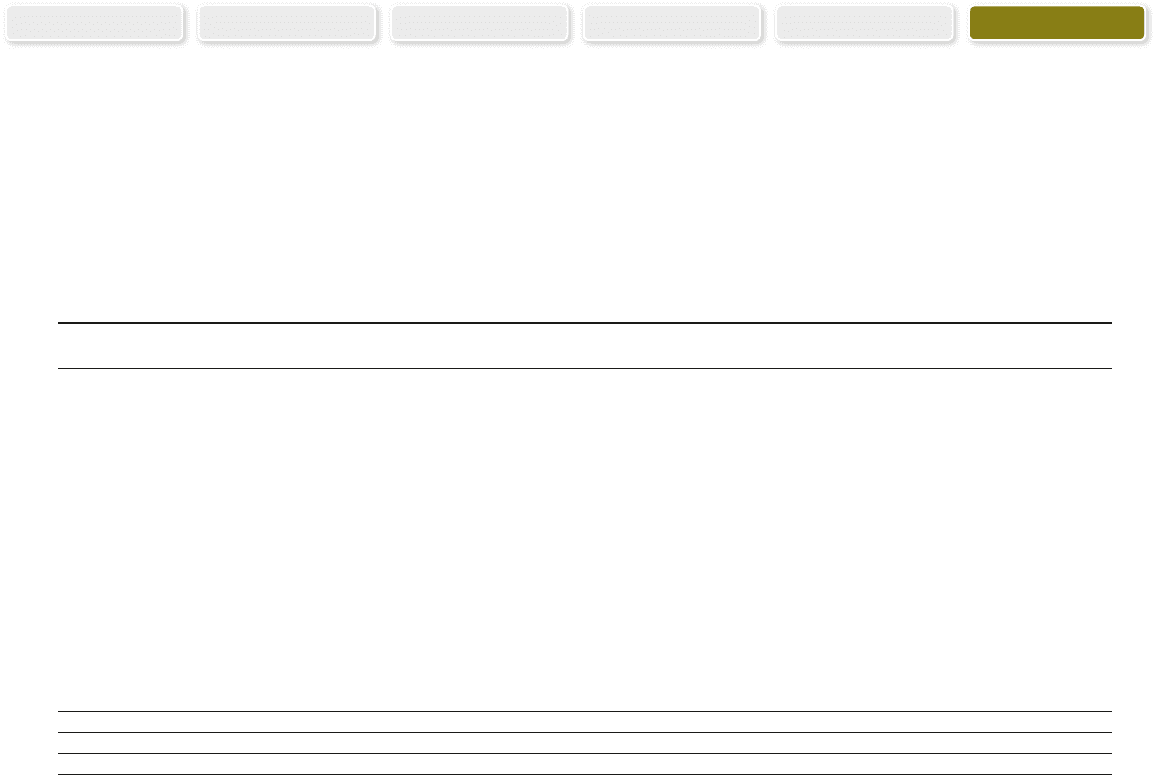
112
CONSOLIDATED BALANCE SHEET CONSOLIDATED INCOME
STATEMENT CONSOLIDATED STATEMENT
OF COMPREHENSIVE INCOME CONSOLIDATED STATEMENT
OF CHANGES IN EQUITY CONSOLIDATED STATEMENT
OF CASH FLOWS
NOTES TO THE FINANCIAL
STATEMENTS
18. Financial Liabilities
18.1. Long-term Debt
Delhaize Group manages its debt and overall financing strategies using a combination of short, medium and long-term debt and interest rate
and currency swaps. The Group finances its daily working capital requirements, when necessary, through the use of its various committed and
uncommitted lines of credit. The short and medium-term borrowing arrangements generally bear interest at the inter-bank offering rate at the
borrowing date plus a pre-set margin. Delhaize Group also uses a treasury notes program.
The carrying values of long-term debt (excluding finance leases, see Note 18.3), net of discounts and premiums, deferred transaction costs and
hedge accounting fair value adjustments, can be summarized as follows:
(in millions of EUR) December 31,
Nominal Interest rate Maturity Currency 2010 2009 2008
Senior Notes, unsecured 5.70% 2040 USD 430 - -
Debentures, unsecured 9.00% 2031 USD 201 553 572
Notes, unsecured 8.05% 2027 USD 51 84 87
Bonds, unsecured 6.50% 2017 USD 334 309 320
Notes, unsecured(1) 5.625% 2014 EUR 544 543 537
Senior Notes, unsecured(1) 5.875% 2014 USD 223 206 -
Bonds, unsecured(2) 5.10% 2013 EUR 80 80 80
Notes, unsecured 8.125% 2011 USD 38 35 36
Bonds, unsecured(2) 3.895% 2010 EUR - 40 40
Convertible bonds, unsecured 2.75% 2009 EUR - - 170
Eurobond, unsecured 4.625% 2009 EUR - - 150
Other debt 4.50% to 7% 2014 to 2031 USD 10 5 -
Mortgages payable 7.55% to 8.65% 2008 to 2016 USD 2 2 3
Senior notes 6.58% to 7.41% 2008 to 2016 USD 7 8 12
Other notes, unsecured 13.21% 2008 to 2013 USD 1 1 1
Floating term loan, unsecured LIBOR 6m+45bps 2012 USD 84 78 81
Bank borrowings EUR 1 2 3
Total non-subordinated borrowings 2 006 1 946 2 092
Less current portion (40) (42) (326)
Total non-subordinated borrowings, non-current 1 966 1 904 1 766
(1) Notes are part of hedging relationship (see Note 19).
(2) Bonds have been issued by Delhaize Group’s Greek subsidiary Alfa Beta.
The interest rate on long-term debt (excluding finance leases) was on average 5.1%, 5.7% and 5.6% at December 31, 2010, 2009 and 2008
respectively. These interest rates were calculated considering the interest rate swaps discussed in Note 19.
Delhaize Group has a multi-currency treasury note program in Belgium. Under this treasury note program, Delhaize Group may issue both
short-term notes (commercial paper) and medium-term notes in amounts up to EUR 500 million, or the equivalent thereof in other eligible cur-
rencies (collectively the “Treasury Program”). No notes were outstanding at December 31, 2010, 2009 and 2008.
Refinancing of Long-term Debts
In October 2010, Delhaize Group exchanged USD 533 million of the 9.00% debentures due 2031 and USD 55 million of the 8.05% Notes due
2027 (together the “Existing Securities”) issued in a private offering by the wholly-owned subsidiary Delhaize America, LLC, for USD 827 million,
5.70% Senior Notes due 2040 issued by Delhaize Group.
The transaction qualified as a “debt modification” under IFRS (see Note 2.3) and any costs or fees incurred adjusted the carrying amount of the
Existing Securities, being the carrying amount of the new Senior Notes, and are amortized over the remaining term of the Senior Notes due
2040. In line with IFRS, the non-cash premium granted, being the difference between the principal amounts of the Existing Securities tendered
and the principal amount of the new Senior Notes issued, has no immediate impact on the carrying amount of the New Notes and is also
amortized over the remaining term of the Senior Notes, i.e. until 2040.
Repayment of Long-term Debts
On February 9, 2010, bonds of EUR 40 million issued in 2005 by Delhaize Group’s Greek subsidiary Alfa Beta matured and were repaid.
Defeasance of Hannaford Senior Notes
In 2003, Hannaford invoked the defeasance provisions of several of its outstanding Senior Notes and placed sufficient funds in an escrow
account to satisfy the remaining principal and interest payments due on these notes (see Note 11). As a result of this defeasance, Hannaford is
no longer subject to the negative covenants contained in the agreements governing the notes.
As of December 31, 2010, 2009 and 2008, USD 11 million (EUR 8 million), USD 12 million (EUR 9 million) and USD 18 million (EUR 13 million) in
aggregate principal amount of the notes was outstanding, respectively. Cash committed to fund the escrow and not available for general
corporate purposes is considered restricted. At December 31, 2010, 2009 and 2008, restricted securities of USD 13 million (EUR 10 million),
USD 15 million (EUR 10 million) and USD 21 million (EUR 15 million), respectively, were recorded in investment in securities on the balance sheet.


